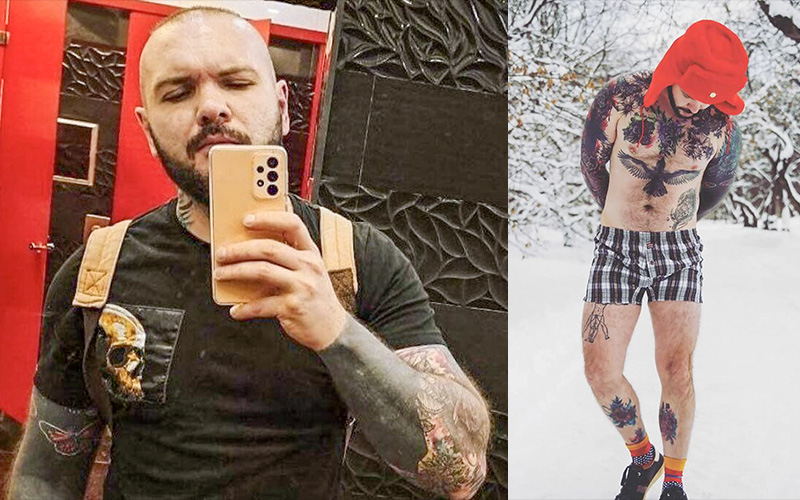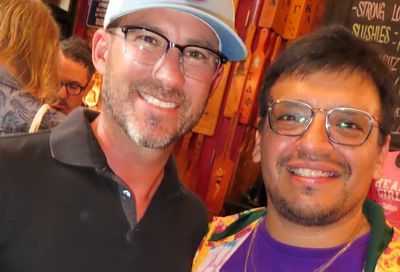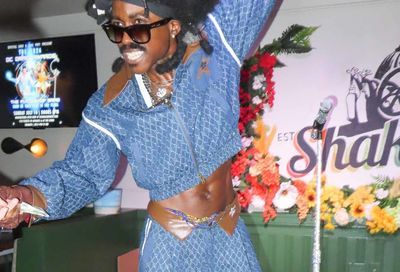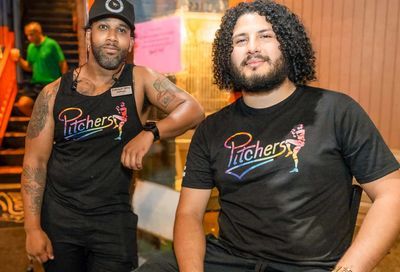Percent of Americans identifying as LGBTQ rises to 5.6%, according to Gallup
Survey finds 1 in 6 members of Generation Z identify as LGBTQ, as do higher numbers of women, non-whites, and liberals

The percentage of Americans identifying as LGBTQ has risen to 5.6%, a full percentage point higher than the 4.5% who identified as LGBTQ four years ago, according to the well-renowned Gallup Poll.
Of adults who identify as LGBTQ, a majority, or close to 3.1% of all Americans overall, identify as bisexual. A little less than one-quarter of LGBTQ adults identify as gay, with about 11.7% identifying as lesbians, and about 11.3% identifying as transgender. About 3.3% of LGBTQ people, or 0.2% of the overall adult population, identifies by some other label.
The estimate was generated from 15,000 interviews conducted over the past year, Jeffrey Jones, the senior editor of the Gallup Poll, told Metro Weekly in an interview.
Jones said that this year, Gallup asked a different question from past LGBTQ surveys to determine how many Americans belong to the community.
“In the past, we just asked, ‘Are you lesbian, gay, bisexual or transgender?’ And it was just a yes or no response,” he says. “This new version that we’re asking would allow them to choose. ‘Please describe which applies to you: straight or heterosexual, lesbian, gay, bisexual, transgender.’ And then they can volunteer something else. So now we can break it down by identity.”
The last time we did the poll in 2017, 4.5% were one of those things,” he continued. “But now we can break it down and find that a little more than half of LGBTQ adults are bisexual. And that’s consistent with other research that we’re familiar with that bisexual is the most common identity. And generally about half of the LGBTQ population identifies that way.”
Jones notes that the breakdown of identities adds up to more than 100 percent, which he attributes to the open-ended nature of the question and the ability of people to identify by multiple labels, such as a person who identifies as both transgender and gay.
Jones says Gallup sought to find statistics on the LGBTQ community with the intention of becoming a source that could help people or government agencies understand more about how many Americans identify as LGBTQ. He notes that outside of a few academic organizations like the William Institute, a think tank at UCLA’s School of Law, and a Census question on same-sex couples, there’s been few surveys measuring the percentage of LGBTQ Americans.
“If there are gaps in official statistics from the census or government agencies, that’s where we can fill in,”Jones says. “This is one area where we’ve found a niche. Another is on religious attitudes, because the government doesn’t measure that. Stock ownership is another one, so how many Americans have the money to invest in stocks.
“We’re in kind of a unique position, because we do a lot more surveys than other people, so we can amass enough sample where we can get a decent estimate on these numbers, whereas if somebody just does a single poll of 1,000 people, they’re not going to get that precise estimate because there will be more error,” he adds.
See also: Study: Latinx millennials more likely to identify as LGBTQ than their peers
According to Gallup’s estimate, the number of younger people identifying as LGBTQ is significantly larger than previous generations. About 15.9%, or 1 in 6 Americans who belong to Generation Z (those born after 1997) identify as LGBTQ, and 9% of millennials (born between 1981 and 1996) identify as LGBTQ, whereas fewer than 4% of Generation X identify as such.
“From our sample, we see it’s a lot more common among the younger generations to identify as LGBTQ, and knowing that, we would expect that number would continue to grow,” says Jones. “The one thing we can’t answer with our data is: is this actually more common? Are more people actually preferring people of the same gender when it comes to sexual attraction or relations, or are they just more comfortable saying it, particularly among younger Americans? It’s hard to answer. There’s probably less taboo among younger generations who’ve grown up in a society where it’s a lot more accepted than their parents’ or grandparents’ generations.”
Jones says Gallup hopes to track identification over time, although he notes that — contrary to fear-mongering by social conservatives that youth are identifying as LGBTQ as part of a ‘phase’ or due to peer pressure — the percentage of millennials identifying as LGBTQ has stayed consistent over time, in the 9% range. He says it will be interesting to see whether the same phenomenon occurs with Generation Z, particularly as more of them become adults and begin to be tracked by such surveys over the next decade.
See also: Only 14% of LGBTQ voters supported Trump, post-election poll finds
Consistent with Gallup’s 2017 findings, a larger percentage of people of color are likely to identify as LGBTQ than non-Hispanic whites. Only about 4.9% of non-Hispanic whites identify as LGBTQ, while 7.3% of non-whites do. Among non-Hispanic Blacks, the percentage is 5.6%, and among Hispanics, it’s 8.4%.
“Those aren’t huge sample sizes, but it’s consistent enough all the years that we’ve asked the question, where the percentage of non-whites is higher than whites, and the percentage of Hispanics is higher than Blacks,” notes Jones. “The reason could be cultural, or just part of a willingness to tell an interviewer that you identify that way. For Hispanics, I think a big part of it is that the Hispanic population is younger, so given the strong relationship between age and LGBTQ identity, I think that’s probably a major factor in why the Hispanic numbers are higher.”
Gallup also found that women are more likely than men to identify as LGBTQ, with 6.4% of women identifying as such, compared to only 4.9% of men. In terms of sexual orientation alone, women are also more likely to identify as bisexual, with about three-fifths of women identifying as such, compared to about 20% who identify as lesbian and 20% who identify as something else. Among men, half identify as gay and more than one-third identify as bisexual.
In terms of ideology, 13% of political liberals, 4.4% of moderates, and 2.3% of conservatives identify as LGBTQ. But differences are less pronounced when it comes to party identification, with 8.8% of Democrats and 6.5% of independents identifying as LGBTQ, compared to 1.7% of Republicans. With respect to education, there are no meaningful differences based on a person’s educational level: the 5.6% of college graduates who identify as LGBTQ is almost identical to the 5.7% of non-college graduates who identify as such.
Read more:
Gay RV park and campground bans transgender men to “build a like-minded atmosphere”
West Virginia bill would prohibit displays of sexuality in schools
Virginia school board asks Supreme Court to overturn lower courts’ decisions in favor of Gavin Grimm
Support Metro Weekly’s Journalism
These are challenging times for news organizations. And yet it’s crucial we stay active and provide vital resources and information to both our local readers and the world. So won’t you please take a moment and consider supporting Metro Weekly with a membership? For as little as $5 a month, you can help ensure Metro Weekly magazine and MetroWeekly.com remain free, viable resources as we provide the best, most diverse, culturally-resonant LGBTQ coverage in both the D.C. region and around the world. Memberships come with exclusive perks and discounts, your own personal digital delivery of each week’s magazine (and an archive), access to our Member's Lounge when it launches this fall, and exclusive members-only items like Metro Weekly Membership Mugs and Tote Bags! Check out all our membership levels here and please join us today!


























You must be logged in to post a comment.